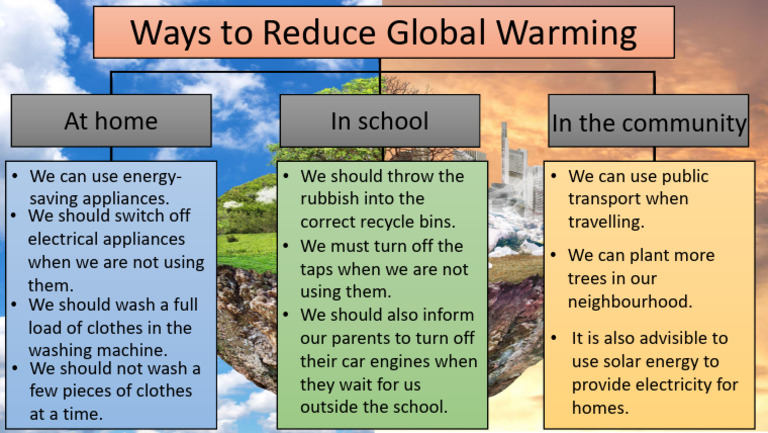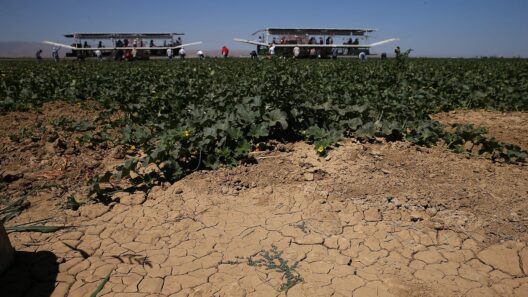The looming threat of global warming is akin to a tempest brewing on the horizon, silently gathering strength as it approaches land. As the stewards of this planet, governments wield an arsenal of policies that can either exacerbate or mitigate this imminent crisis. By harnessing an array of strategies, a government can effectively combat the progressive rise in global temperatures through innovative legislation and initiatives that aim to preserve the delicate balance of our ecosystems.
First and foremost, a comprehensive approach to renewable energy is paramount. Transitioning to renewable energy sources is not merely a choice but an essential pivot required to stabilize the planet’s climate. Wind, solar, hydroelectric, and geothermal technologies present an unparalleled opportunity to reduce reliance on fossil fuels. Imagine replacing a sputtering engine with an elegant, humming machine that self-sustains. By investing in infrastructure that supports these technologies, governments not only create resilient energy systems but also stimulate economic growth through job creation in burgeoning sectors. Initiating tax incentives for businesses that adopt renewable energy solutions could catalyze this transition, enabling businesses and consumers alike to embrace clean energy with newfound vigor.
Moreover, the implementation of stringent regulations targeting emissions is indispensable. Merely encouraging corporations to reduce their carbon footprint is insufficient; there needs to be a framework that compels compliance. The establishment of emissions trading systems, where companies can buy and sell permits to pollute up to a certain cap, can promote reductions in greenhouse gas emissions in a cost-effective manner. Moreover, mandating regular audits of industrial emissions would ensure transparency and accountability. The symbiotic relationship between innovation and regulation could lead to technological advancements that further lessen emissions without stifling industry growth.
Alongside these regulatory frameworks, governments should invest in research and development for carbon capture and storage technologies. This is akin to training a dragon to fly—a complex feat but one that holds the potential for significant impact. By trapping carbon emissions directly from sources such as power plants and storing it underground, we can drastically curb the amount of greenhouse gases entering the atmosphere. Additionally, providing grants or subsidies to private entities that pursue pioneering carbon capture methods can accelerate this technology’s maturation and adoption.
Another pivotal area for intervention is transportation. The transportation sector is a colossal contributor to greenhouse gas emissions. A multilayered approach that encourages public transportation systems, such as buses and subways, would reduce individual car emissions significantly. Envision a city where electric buses whisk commuters along picturesque routes while minimizing pollution—a transformation woven into the architectural fabric of urban environments. Furthermore, incentivizing electric vehicle (EV) adoption through tax rebates and installing extensive charging infrastructure can also help in weaning off fossil fuel dependency. A strategic vision for the future of transportation must embrace innovation while ensuring accessibility for all citizens.
A focus on urban planning and green infrastructure must not be overlooked. Cities designed with sustainability in mind will foster healthier living conditions while mitigating heat island effects and managing stormwater runoff. Initiatives to create green spaces, such as rooftops gardens and urban forests, will not only absorb carbon dioxide but also enhance biodiversity. Establishing regulations that require new developments to include green roofs or permeable pavements is a step towards creating self-sufficient, resilient urban areas. Moreover, promoting sustainable agriculture techniques, such as agroforestry and permaculture, will transform how communities engage with their landscapes, ensuring food security while respecting ecological constraints.
Education holds the key to transforming societal norms and expectations regarding climate change. Governments must invest in comprehensive environmental education programs to foster awareness from an early age. Through curricula that enrich understanding of climate science and sustainability practices, citizens can cultivate a sense of stewardship towards the planet. This cultural shift towards environmental consciousness can motivate grassroots movements, further pushing government accountability. Organizing climate action summits during local, national, and even global events can galvanize young activists to engage in meaningful dialogue and pressure decision-makers into enacting necessary reforms.
Equity in climate policies is critical. Policymaking must prioritize vulnerable populations disproportionately affected by climate change. Consider the metaphor of a lifeboat: a lifeboat built for survival must accommodate everyone, particularly those who struggle to stay afloat. Governments should design climate resilience strategies that explicitly address the socioeconomic disparities that exist. Initiatives like subsidized energy-efficient appliances for low-income households and financial assistance for at-risk communities can create a more equitable transition into sustainability. Such an inclusive approach ensures that when one part of the community benefits, they do so without leaving others behind.
Lastly, international cooperation is indispensable in the fight against global warming. Climate change knows no borders; thus, nations must collaborate to tackle this shared crisis. By engaging in international agreements, governments can commit to measurable targets that unify efforts worldwide. Multilateral partnerships can foster the exchange of technology and resources, facilitating rapid progress toward a greener future. We are all interconnected; a ripple created by one country can have repercussions that are felt globally.
In closing, the government holds a profound responsibility to enact policies that can dramatically reduce global warming. Every action taken—be it a legislative measure, investment in technology, or a commitment to education—serves as a drop in a larger ocean of change. By collectively steering processes toward sustainability, nations can collectively break free from the chains of destructive practices and forge a legacy that prioritizes the health of our planet for generations to come. It is not merely about surviving the storm; it is about mastering the art of coexistence with our Earth, a daunting yet essential journey ahead.







